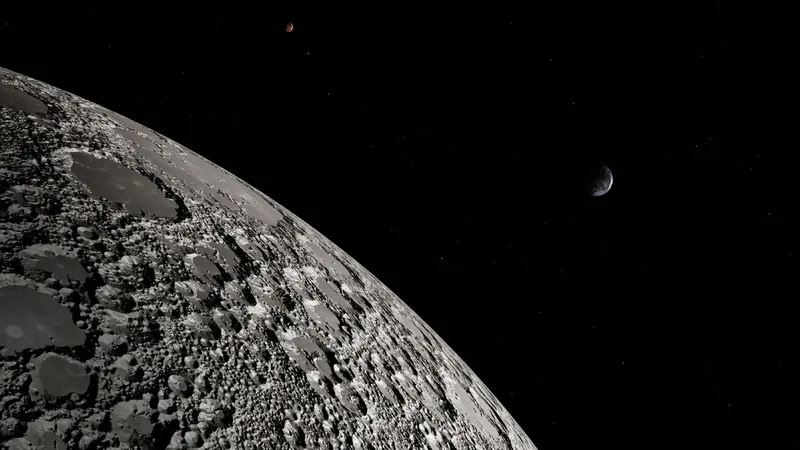
Shocking Discovery: The Moon's Age is Older Than We Ever Imagined!
2024-12-18
Author: Wei
Groundbreaking Study Reveals Moon's True Age
A groundbreaking study has unveiled that our moon is much older than scientists originally believed, shaking the very foundations of lunar geology. Researchers have revealed that a significant 'remelting event' on the moon's surface may have misled scientists into underestimating its age all these years. But how did we get it so wrong, and what does this mean for our understanding of the moon's history?
Formation of the Moon
The moon was formed in the chaotic early days of our solar system about 4.51 billion years ago after a massive collision between a protoplanet named Thea and a young Earth. This cosmic collision blasted out vast amounts of molten rock into space, which eventually cooled to become the moon, orbiting Earth at an average distance of about 239,000 miles (385,000 kilometers).
Revised Age Estimates
Initially, scientists dated the lunar rocks from NASA’s Apollo missions to around 4.35 billion years old. However, new analyses of these samples have found evidence of ancient zircon crystals embedded in the rocks, indicating ages up to 4.51 billion years—remarkably close to Earth's formation and much older than previously thought.
Understanding Remelting Events
The latest study, published in the esteemed journal *Nature*, describes a phenomenon known as a remelting event. According to the research team, this event effectively 'reset' the age of many lunar rocks. Lead author Francis Nimmo from the University of California Santa Cruz explained, 'When these materials were heated, their internal clocks were reset to that time,' leaving some zircons untouched that retained their original ages.
Implications of the Findings
One striking implication of this discovery is the low number of impact craters on the lunar surface. If the moon were indeed older than 4.35 billion years, scientists anticipated a much higher number of craters. The remelting process likely erased many of these features, making the moon appear younger than it is.
Theories on Gravitational Interactions
The study further speculates that this remelting event could have resulted from shifts in the moon's orbit, instigated by gravitational interactions between the moon, Earth, and the sun. Such gravitational turmoil could have led to multiple remelting events, particularly as the moon moved further away from Earth—an ongoing journey that continues to this day.
Geological Activity Beneath the Surface
Interestingly, the findings also suggest that the moon experienced a gradual, intense heating process mostly beneath the surface, which means that while its surface looks familiar, the geological activity was happening just below the crust.
A Continuing Quest for Age Determination
Despite this important revelation, the exact age of the moon remains elusive. Researchers estimate its age could range between 4.43 billion and 4.53 billion years, maintaining a level of uncertainty comparable to previous studies. However, they agree that 4.53 billion years is likely the maximum age since any earlier dating would contradict the current understanding of the moon's formation relative to Earth.
Conclusion
In summary, while we may not have discovered the moon's exact birthday just yet, one thing is clear: it’s a lot older than many of us ever imagined, and the quest to solve the mysteries of our celestial neighbor continues. Could there be even more astonishing secrets lying in the moon’s unexplored regions? Stay tuned!



 Brasil (PT)
Brasil (PT)
 Canada (EN)
Canada (EN)
 Chile (ES)
Chile (ES)
 España (ES)
España (ES)
 France (FR)
France (FR)
 Hong Kong (EN)
Hong Kong (EN)
 Italia (IT)
Italia (IT)
 日本 (JA)
日本 (JA)
 Magyarország (HU)
Magyarország (HU)
 Norge (NO)
Norge (NO)
 Polska (PL)
Polska (PL)
 Schweiz (DE)
Schweiz (DE)
 Singapore (EN)
Singapore (EN)
 Sverige (SV)
Sverige (SV)
 Suomi (FI)
Suomi (FI)
 Türkiye (TR)
Türkiye (TR)